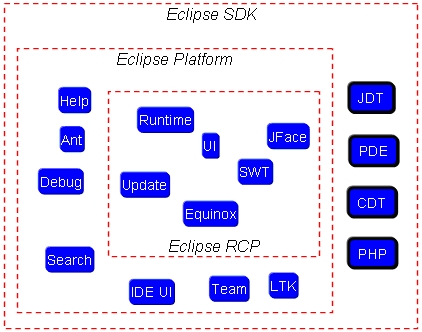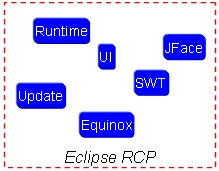Before you read this blog, i would request you to have a look at my site so that you get an idea of what i have been doing. I have been introduced to many challenges to choose between the consulting and fulltime positions when i moved to USA from Germany. I was with product development companies all the while and its little strange for me the “idea” of consulting. I did quite a bit of research on different companies and what kind of job should i choose. For the rest of my blog, i do not want to take any of the company names. I hope that you would be able to relate what i am saying to your own experiences. I would be glad to hear more experiences and your views.
Before i say anything, I want to clarify what i am referring to as a “consulting job”. You are working on the payroll of a consulting company, which does not have any product behind it, but just acts as a head-count machine. They do have some direct clients and you are placed with one of them. Its purely on your luck that you get a long-term contract and you are not fired from the job from time-to-time.
By “full time job” i mean, you are working with a Product development, Services, rarely some consulting companies on their payroll. You might work for their own product or might do services to customers. You can be “fired” at any point of time but atleast they will give you 2 weeks notice (i guess this is a norm).
And now i want to share few categories that i considered before i decided my path. Hope this helps to some of you who are looking for a change.
- Work Experience
- Fulltime
- You work with a single product for a long time. You will get to see to see entire system and some times you might get a chance to build the system from scratch.
- Depending on the companies technology direction and its vision, one need to constantly change their technology area.
- You might some times consult your customers to implement your product, train them and others. Still it might be with the product of your company.
- Consulting
- You are with clients, helping them to achieve their goals.
- You might not have any say on the product direction or what the customer is doing. You are considered purely as a resource who is supposed to execute their instructions.
- Your are at the customer site because you are a specialist. If you dont meet their expectations, you need to search another job.
- On the technical level, you will see different systems and get to learn customer’s environment.
- Fulltime
- Influence
- Fulltime
- You are given certain responsibilities and you as a fulltime employee and you have the right to influence your organization.
- Every action you do, every decision you take has a direct effect on the organization.
- Consulting
- Mostly customers do differentiate the fulltime employees and consultants. Social life with fulltime employees might be difficult.
- You as a consultant normally will not have any influence on the project.You are there to help the project. Thats it.
- Fulltime
- Compensation
- Fulltime
- On the industry average fulltime employees are paid less than the consultants counterparts with same technology and experience.
- Some times waiting for bonus and performance reviews can be frustrating.
- Compensation is the last thing that you would discuss with the company.
- Consulting
- Consultants gets paid more as their clients pay more on the hourly basis. Its very important to know that the “client” has absolutely no liability to wards the consultant. Client might do all his decisions according to his whims and fancies.
- Its unlikely that you discuss about the exact compensation in the first call.
- Your consulting company might not be able to pay you at the right time as there is always a lead time for him to get paid by the client. Unless its a big company which has life of credit, its difficult to trust.
- Fulltime
- Interviewing Process
- Fulltime
- Normally companies will post the job description on their own web site or some of the job posting sites. They do not prefer to go via vendors / recruiters.
- Candidate takes a phone interview – HR, phone interview – Technical, personal interview – Technical, phone call to finalize the offer and then a complete background check.
- The entire process is normally around 1-2 month duration. At the end of this, you can still say NO to the offer that the company made.
- Consulting
- You normally decide on the hourly rate in the beginning of the process
- Your consulting company or other vendors first talks to you about the job and then they SUBMIT you to the client.
- They insist you to have all the KEY WORDS that the client is looking for in your resume. If you dont have it, its a crime.
- In the event of multiple vendors marketing you, its likely that you have multiple resumes. (you might not like it, but it happens)
- You typically have a phone interview and then the client decides if you are in the project or not. In the ideal case, the consulting company has to SCREEN the candidate, do the BACKGROUND CHECK, get BEST of the available technical brains.
- Fulltime
- Miscellanious
- Fulltime
- I do see many people who got stuck in the companies in the full time positions.
- If you stick to a company for a long time, be sure that you update your knowledge and also be aware of whats happening out side your company.
- Some complain about the bureaucracy in the company and they are not able to grow for a long time.
- Consulting
- Its pity that some times your friends might suggest you to have a Java, Oracle and Microsoft certifications in your resume, where as you have not given those certification exams.
- If you are of 1-3 years experienced and what to apply for a job via a consulting company, they might ask you to put a minimum of 6 years of experience. In the end if you see your time line in your life, you have more experience than what you can.
- Fulltime
At the end of this exercise, its very important to understand that your priorities are very important. You need to decide what you want to do depending on your passion and previous experiences. All the topics and points i have raised are purely result of my study and 3 months of job search for some good project and good company.
I wish everyone — who is looking for a job — all the best and make a wise decision. Luckily i did make a decision and i am glad for what i did.




